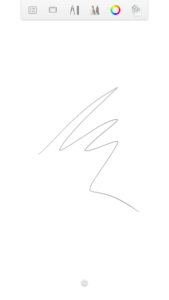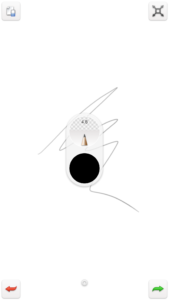Cleaning up my old hard disks, I found several designs I did while I was a digital design student in the 90’s, when the majority of multimedia projects were done in Macromedia Director and Flash was in its infancy. Sorry if images are too small (at that time, monitor resolution was a big issue).
In today’s world of tablets , it is common to encounter applications that enable/disable their interfaces to facilitate the work with content. This can be easily found in drawing apps, where the canvas is a blank “sheet” and, depending on your interaction, a menu with brushes and colors options appear. I call these experiences as hidden interfaces.



Hint of the day: Don’t limit your creativity just because you haven’t seen something similar to your ideas before. Play with your sketches, experiment. Even if the idea does not work, it may help you in future projects.